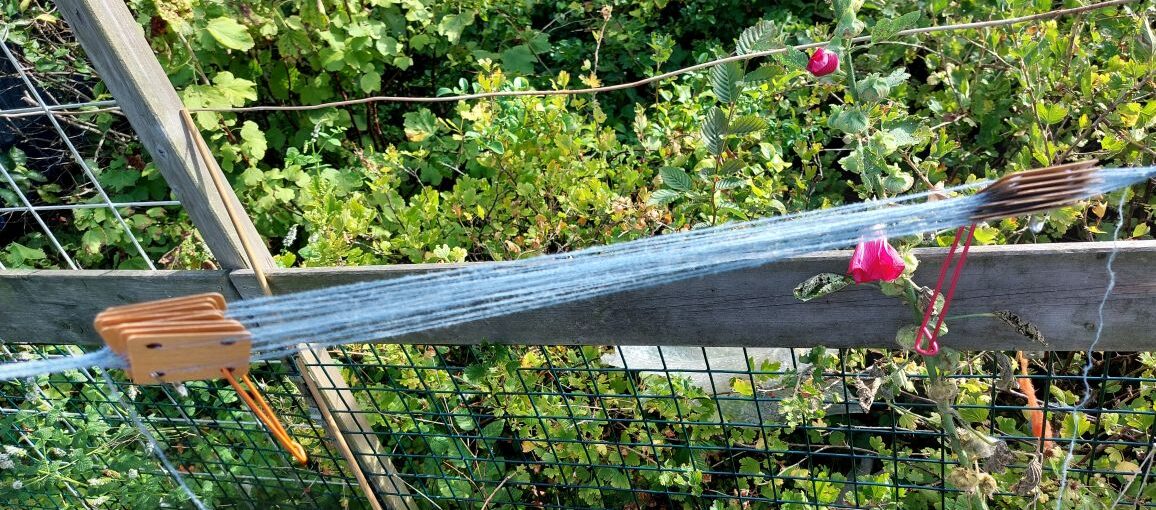I have set up the warp for Band 1, with newly spun middle thickness yarn, like I decided to do in the previous post.
It is a longer warp, it’s length is 2,5 meters. I expected the wool to ‘not behave smoothly’, and it did.
With the samples, I undid by hand some twist that resulted from the turning of the tablets . That was too tiring with this long a warp. For this warp at first I used swivels. That worked, but that is not very much an Iron Age appropriate solution.
In Andean weaving, the weaving can be done from opposite sides of the warp. I wanted to try that here too, so as to untangle by weaving the twist away. That can be done with two weavers. But as I do this alone, I will play the part of two weavers.
Therefore I doubled the cards, set up the mirror image on the other side of the warp, and started weaving alternating both sides.
That works very well. It is not as bothersome as I imagined to change sides. I could unhook the side I had woven on, hook that side up on the anchor point, take the other side of the anchor point, and hook that up onto my belt.
There is good reason to try this method.
As I understand, the finds have very few, (surprisingly few?) changes of direction in those specific bands.
Therefore, there is the need to untangle in another way (than change direction) .
Swivels are a no go. Wool is difficult to untangle by hand (twist in twisted woollen threads does not ‘travel out’ easily) .
I think it pretty much comes down to two weavers then. Which, based on Andean ways, can surely be one easily too.
This is a post about weaving Finnish Iron Age bands with spindle spun weaving yarn. I weave the bands listed in the book ‘Tablet Woven Treasures, Archaeological Bands from the Finnish Iron Age’ by Karisto & Pasanen (2021), one by one in the order of the book.
